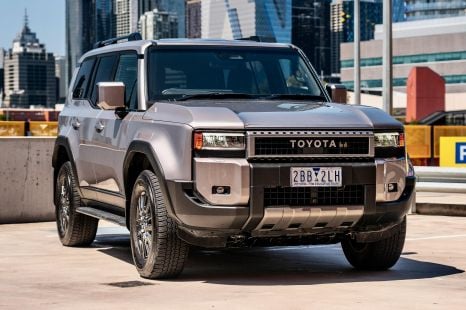

Max Davies
2025 Toyota Prado GXL review
3 Months Ago
The new 1.9-litre turbo-diesel engine option for the MU-X is cheaper, lighter and more efficient – though it's slower and can't tow as much.
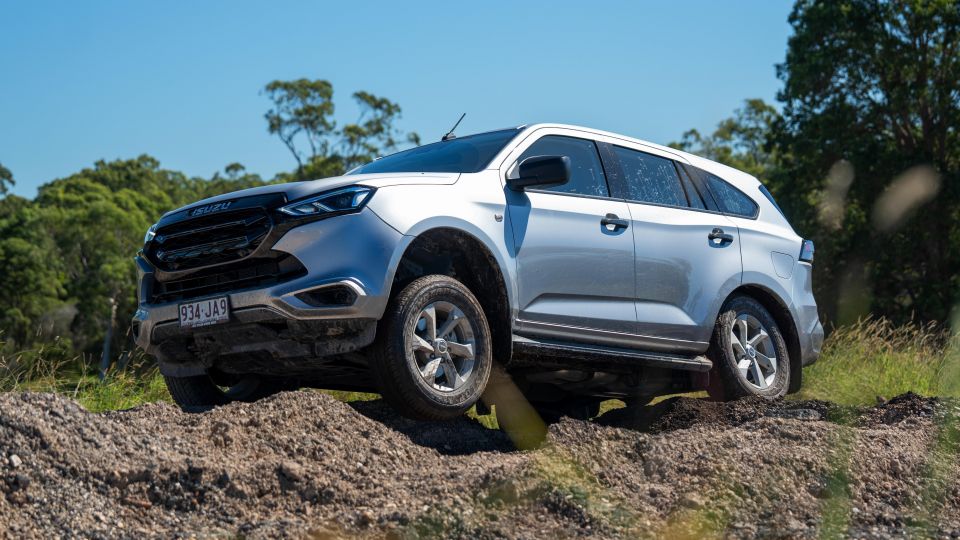
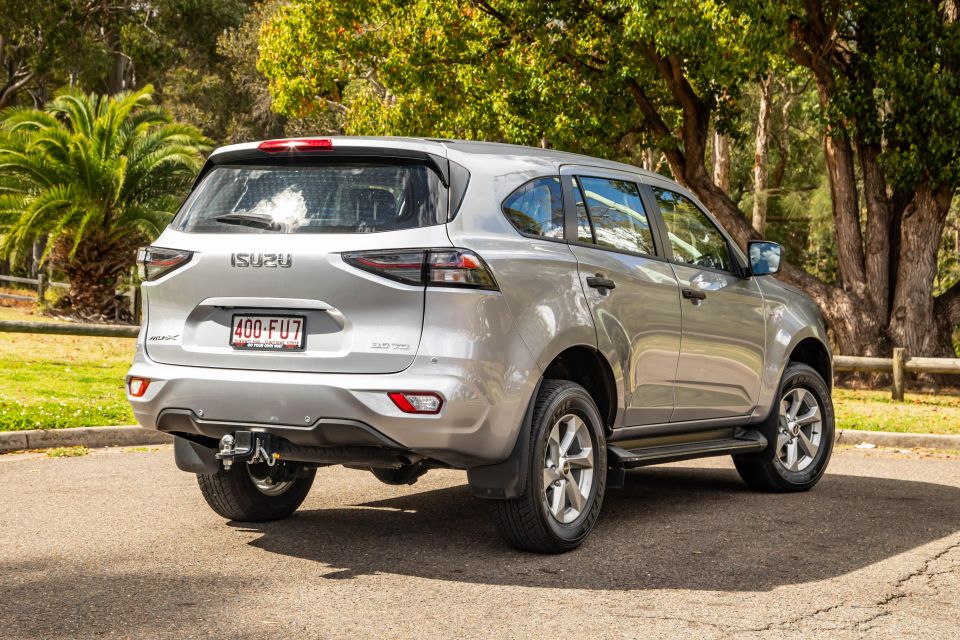

Quickly see how this car stacks up against its competition. Select any benchmark to see more details.
Where expert car reviews meet expert car buying – CarExpert gives you trusted advice, personalised service and real savings on your next new car.
The Isuzu MU-X seven-seat body-on-frame SUV is now available with a more affordable, more economical turbo-diesel powertrain.

A new 1.9-litre four-cylinder turbo-diesel engine has been introduced to the local lineup for 2024 (MY24). It’s not entirely new to Isuzu Ute Australia however, as it joined the D-Max range in 2022. The engine is also offered in the related Mazda BT-50 ute.
Producing 110kW of power and 350Nm of torque, this new engine is down 30kW and 100Nm on the larger and heavier 3.0-litre four-cylinder turbo-diesel carried over unchanged. It also has a reduced braked towing capacity of 3000kg, down 500kg on the 3.0-litre.
This 1.9-litre engine is available in three different variants – LS-M 4×2, LS-M 4×4, and LS-U 4×4. It also brings down the entry price for the MU-X range to $47,400 before on-roads, which is much closer to budget-oriented seven-seat off-roaders like the LDV D90 and SsangYong Rexton.
Unlike the related D-Max which is receiving a more comprehensive update for MY24, the MU-X is soldering on unchanged in terms of specification.
Is this new 1.9-litre turbo-diesel engine a good fit for this seven-seat body-on-frame SUV? Read along to find out.
The new 1.9-litre turbo-diesel engine is available in three different MU-X variants – LS-M 4×2, LS-M 4×4, and LS-U 4×4.
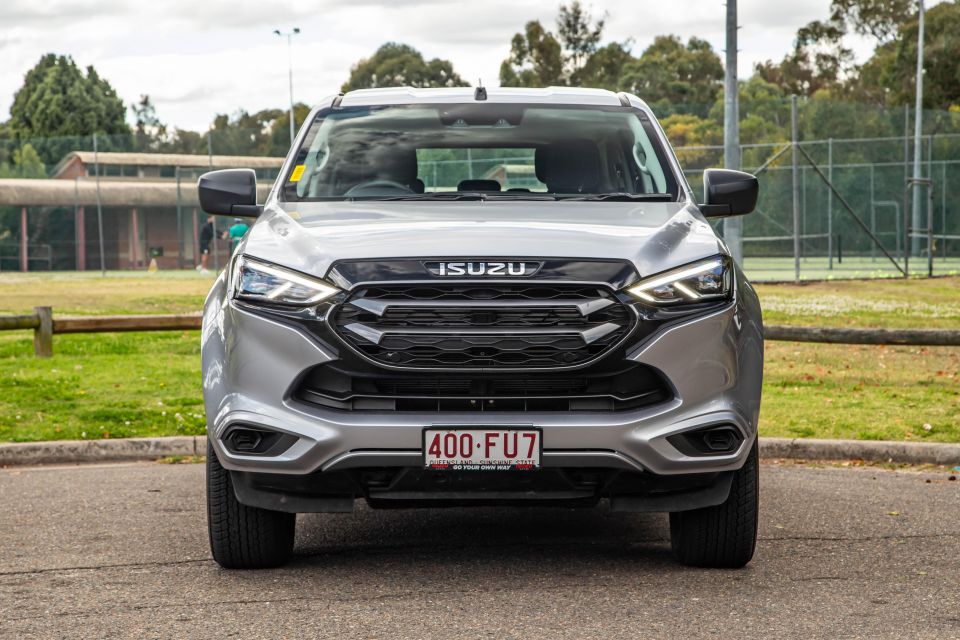
The other MU-X variants with the 3.0-litre turbo-diesel engine received a price rise between $500 and $2000, depending on the variant, for the 2024 model year.
2024 Isuzu MU-X pricing
Prices exclude on-road costs unless stated otherwise
To see how the MU-X compares with its rivals, use our comparison tool.
Buy your new car without the stress. It's fast, simple and completely free.

Great service from Travis and team, second time I have used this business would not hesitate to recommend them to anyone
Craig C.
Purchased a Ford Ranger in Sunshine Coast, QLD
CarExpert helped Craig save $7,224 on his Ford Ranger, now let us save you on your next new car.
Get your BEST priceIf you’re expecting drastic changes inside the MU-X, don’t hold your breath.
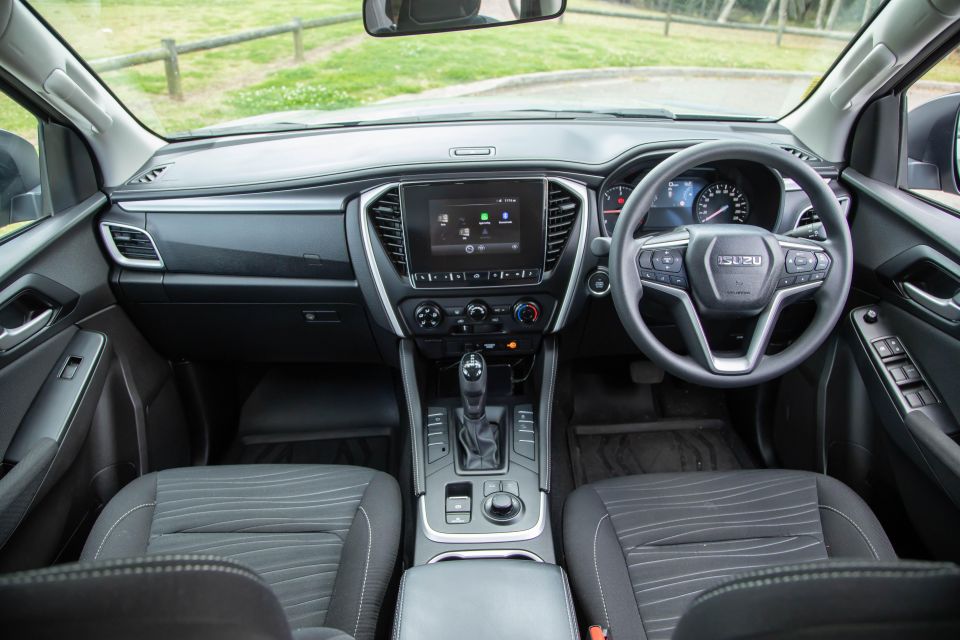
We spent the majority of our time at the national media launch for the MU-X driving and experiencing the entry-level LS-M variant. Hedge your expectations accordingly.
Hopping into the Isuzu MU-X is thankfully pretty easy thanks to side steps and number of grab handles. I did find, like a number of high-riding ute-based SUVs, it takes a moment to get comfortable behind the wheel.
Once you’re in, the driver’s seating position is perched quite high, which is something SUV buyers look for. Throughout my time driving I found it gave me a ‘King of the Road’ type of feeling which was confidence-inspiring.
As standard the MU-X LS-M comes with black and grey cloth upholstery that has an inoffensive design with a number of wavy lines running across the seat back and base.
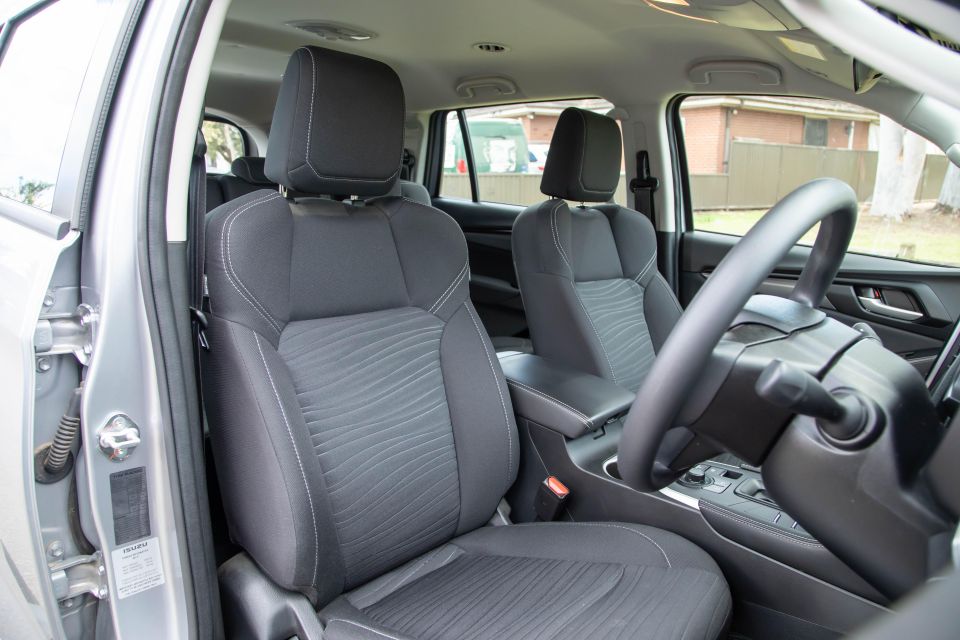
The front seats are manually adjustable which is to be expected for this price point. Despite this you can still dial in your desired seating position and the seats themselves are really comfortable.
The driver’s seat in particular has enough side bolstering to hug you in, plus there are some nice padded sections where your shoulders sit. Something it is lacking, however, is a bit more thigh support for long-legged drivers.
Ahead of the driver is a urethane (plastic) steering wheel which isn’t uncommon for entry-level body-on-frame SUVs. It would be nice to have a leather-wrapped unit in this variant but you need to step up to the mid-spec LS-U to get it.
All the buttons on the steering wheel are logically placed and are easy to understand. They also all have a clicky action which makes pressing the buttons very satisfying.
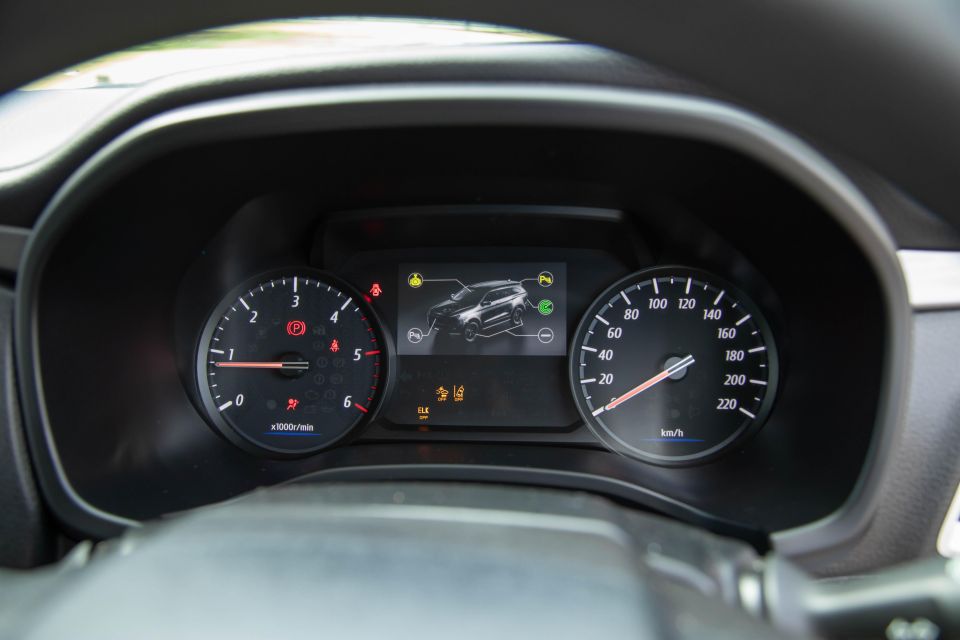
Ahead of the driver the instrument cluster is unchanged. There are analogue dials for the revs and speed flanking a carryover 4.2-inch digital instrument cluster, which is a little on the small side but tells you all you need to know.
You can get lost quite easily in the trip meter’s settings, as it feels like there’s an option for everything. It’s have to have configurability but surely there’s only so much you can do with a 4.2-inch screen.
Moving across the entry-level MU-X LS-M retains its 7.0-inch touchscreen infotainment system. You need to step up to the mid-spec LS-U to get the larger 9.0-inch unit which fills the space on the dash a little better, and doesn’t have large black borders.
This infotainment system does look okay with its matte finish, but it picks up fingerprints and reflections like nothing else. The native user interface is also really dark, almost aftermarket-looking, which amplifies these imperfections.
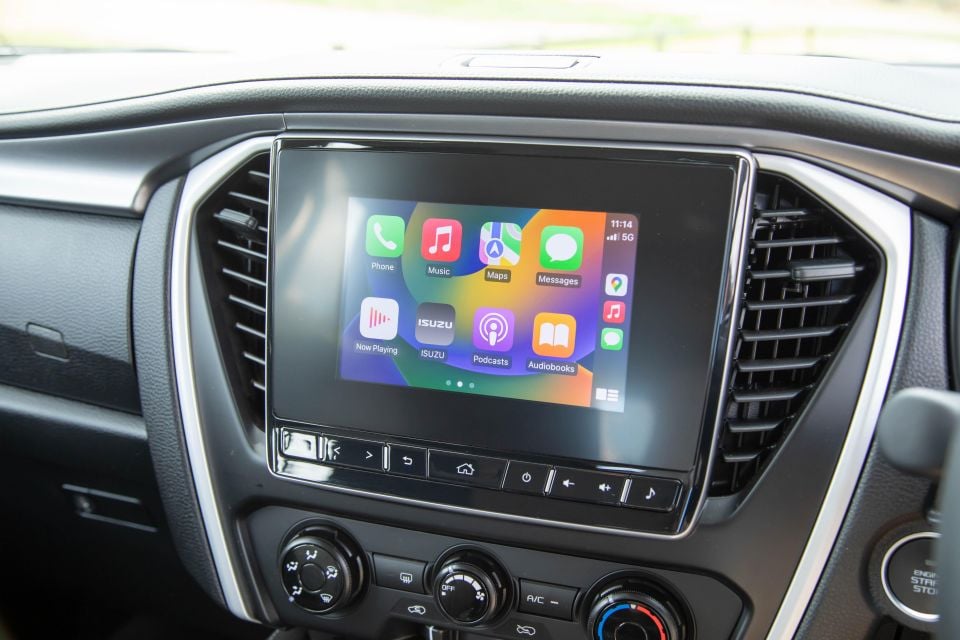
Gripes with the infotainment system include the fact you need to click an ‘Okay’ button on the screen every time you start up the car to properly use the screen, as well as annoying push buttons rather than a dial to change the volume.
Hopefully both of these gripes are addressed with a future update. The D-Max ute on the other hand now receives dials under the touchscreen for volume and tuning the radio station.
The touchscreen doesn’t appear to have very much processing power, meaning it takes a while to turn on at startup and also when loading new pages.
As standard the MU-X LS-M comes with wired and wireless Apple CarPlay, though Android Auto is only available in wired form.
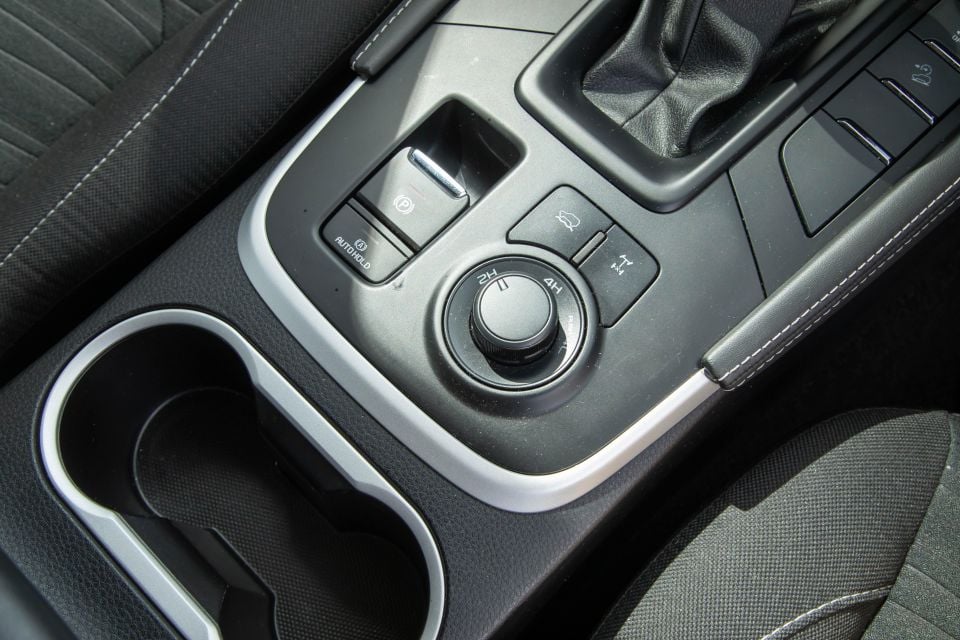
With my iPhone 15 Pro Max connected wirelessly for a very brief period I didn’t experience any dropouts. Previous experience with this touchscreen has proven it’s prone to dropouts and it takes forever for smartphone mirroring to boot up again at times, however.
Despite having wireless Apple CarPlay there’s no wireless phone charger as standard, which means you need to be careful (when connected to wireless Apple CarPlay) your phone doesn’t run out battery.
There is a generous space to store your phone ahead of the gear selector however. Isuzu Ute Australia does offer a genuine accessory where it uses this space as a wireless charger. It costs an additional $433.27.
Looking around the cabin the MU-X LS-M has a large spread of harder plastics, but this to be expected given it is an entry-level model. To be fair there are some plusher touches in touch-point areas including the armrests and upper dashboard cover.
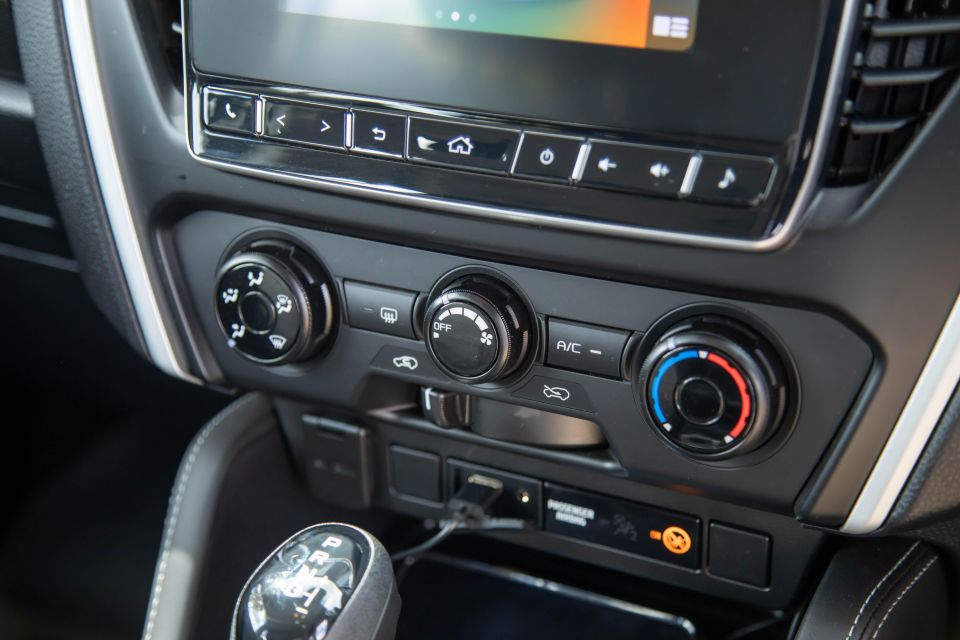
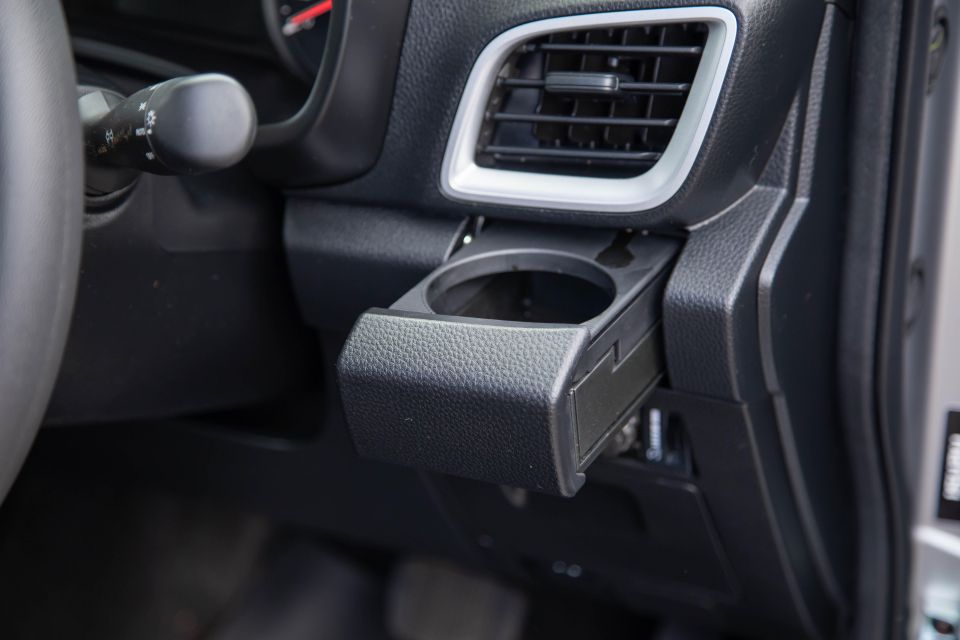
The centre console armrest in the MU-X is notably better than the one in the related D-Max ute as it doesn’t have a cutout for the physical handbrake. The MU-X has an electric park brake which makes sense in the family-friendly SUV.
Other nice finishes up front in the MU-X include tradie-style cupholders that pop out from the dashboard in front of the side air vents, as well as a gear selector that sits comfortably in the hand.
Thankfully all the buttons on the centre console make logical sense, including the dial for the four-wheel drive controls.
The MU-X LS-M makes do with manual air-conditioning which is pretty common for entry-level vehicles in the segment. You need to step up to the mid-spec LS-U to get dual-zone climate control.
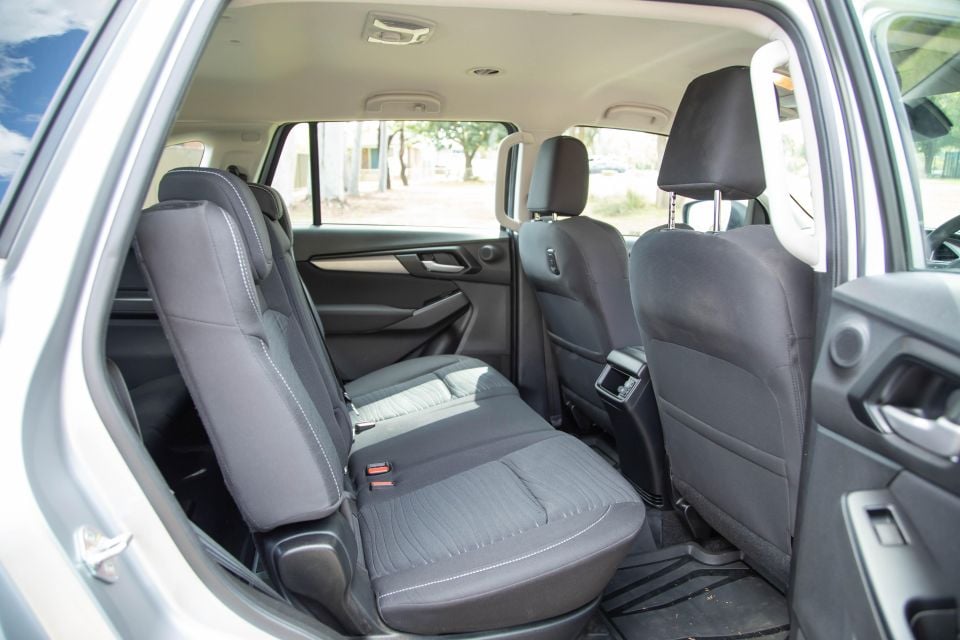
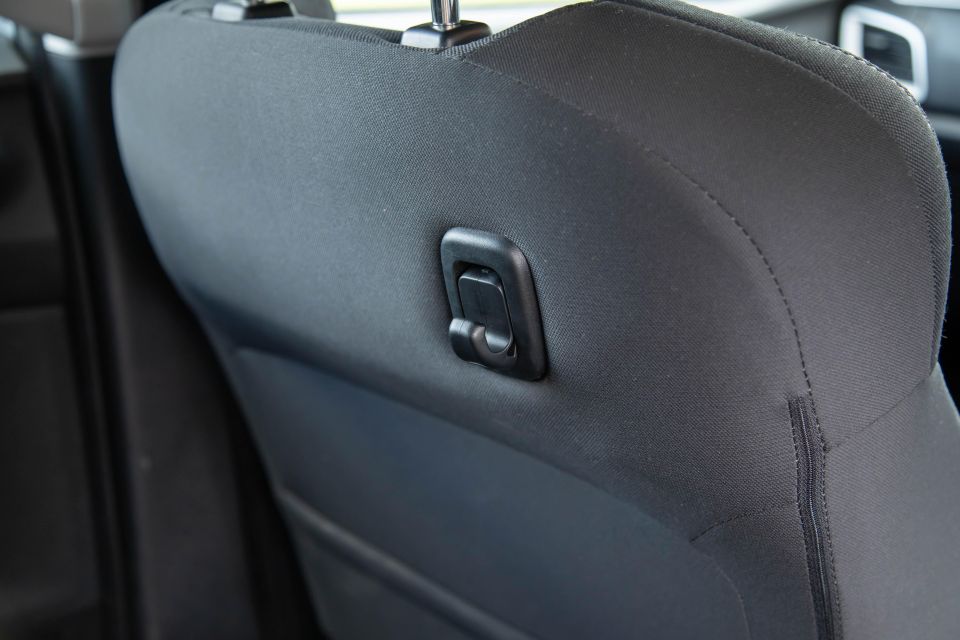

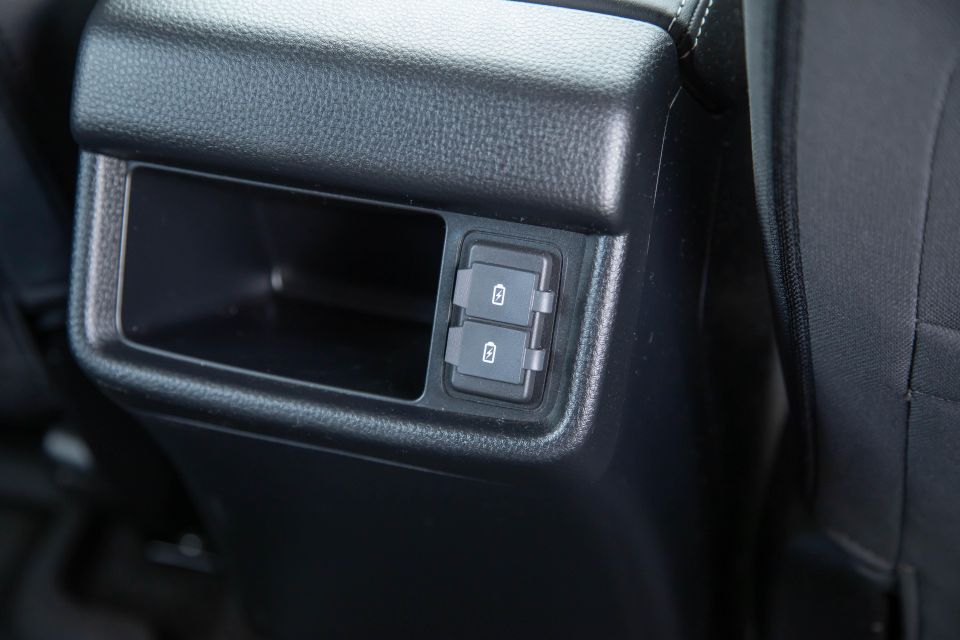
Interestingly with the manual air-con setup in the entry-level LS-M is the a physical lever to switch between outside and recirculating air. It gave me huge throwback vibes to my family’s 2000 Holden Rodeo… which is technically a rebadged Isuzu.
Moving to the second row there’s a generous amount of space for passengers. At a leggy 182cm tall I had adequate leg, head, shoulder, and toe room behind my driving position.
The second-row seats don’t slide but they do recline, allowing you to lay back a bit and relax. It’s really easy to go two up in the second row of the MU-X and perhaps even three up at a pinch.
Second-row amenities include USB ports on the back of the centre console, a nook next to the USB ports large enough to house a phone that’s charging, as well as a bag hook on the back of the front passenger seat.
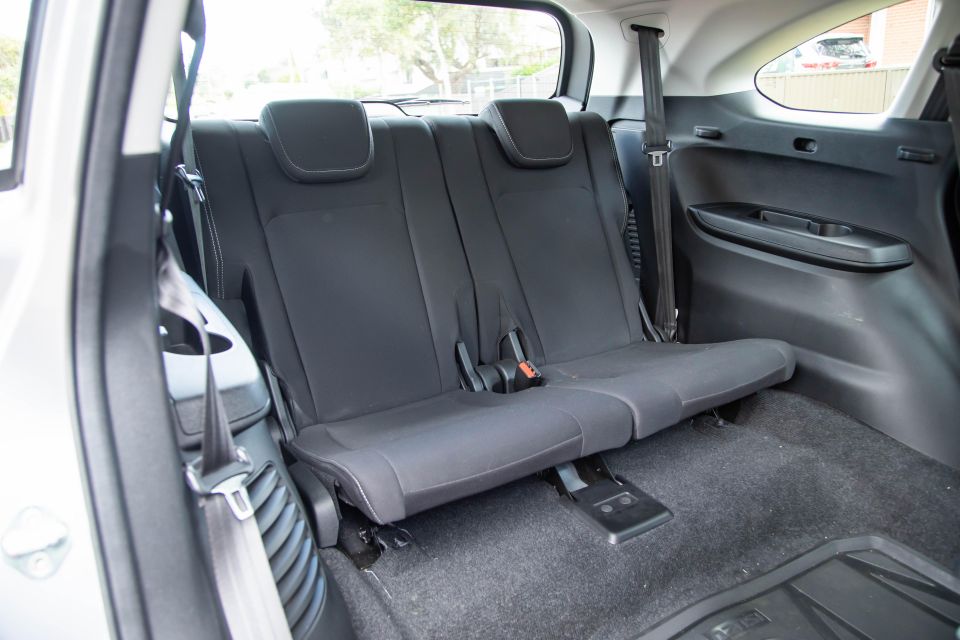
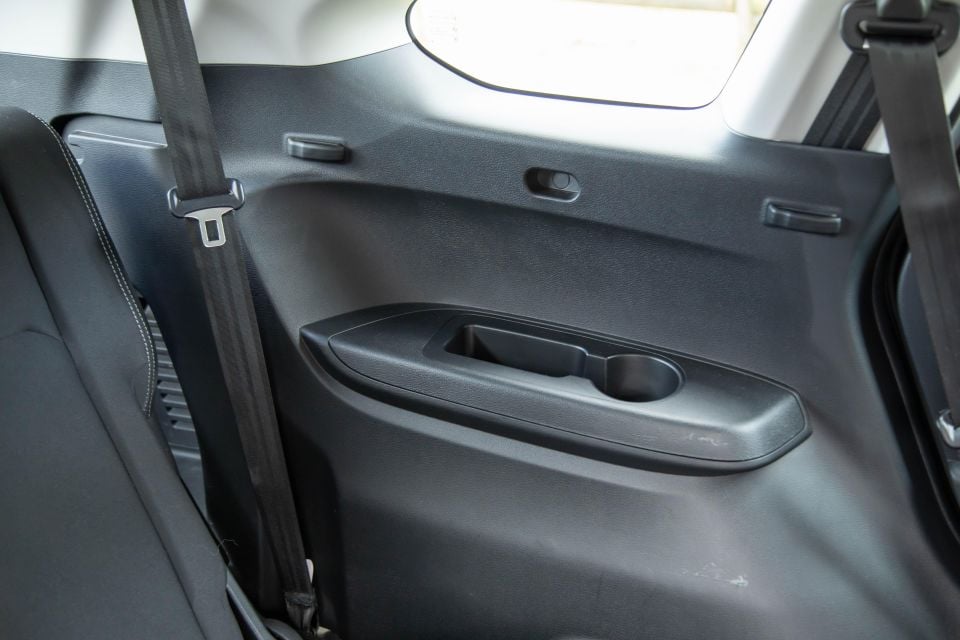
There’s also thankfully a dedicated rear blower with roof-mounted air vents for people in the second and third row. This can be activated by a button on the right-hand side of the steering wheel, with fan speed controlled via a dial on the roof.
Speaking of the third row, you can access it by getting the second-row seats to fold and tumble. This happens pretty quickly and makes getting in easier. Annoyingly the way the 60:40 split fold is configured means the larger portion is on the kerb side in right-hand drive Australia.
Once you’re in the third row I was pleasantly surprised that I could fit. Legroom is pretty good for adults, as is toe room. This doesn’t happen very often in three-row body-on-frame SUVs.
In the third-row seat’s default upright position I had limited headroom, but after faffing around for a bit I found out each individual seat reclines, meaning my head was no longer wedged into the headliner.
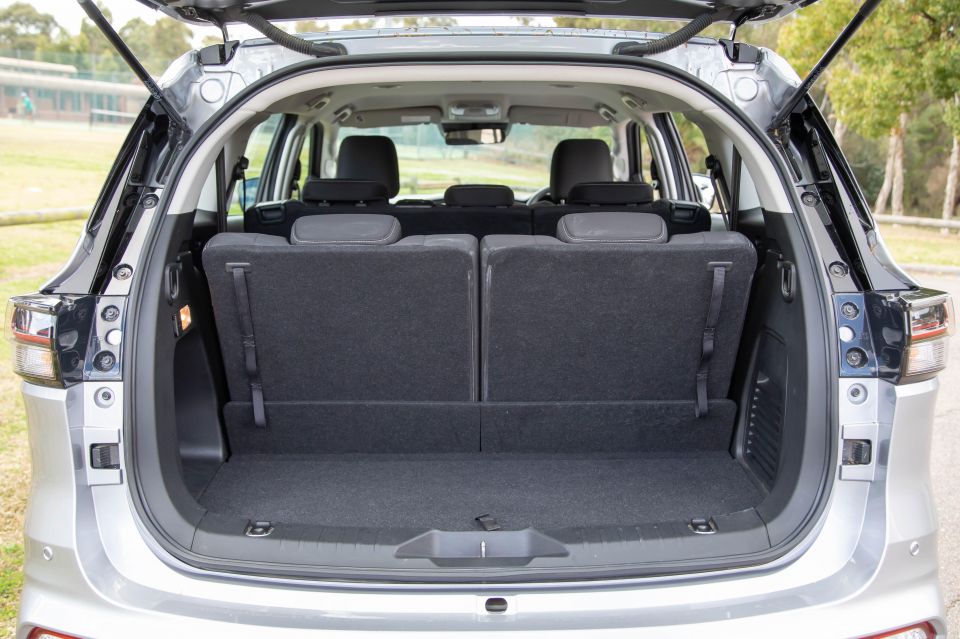
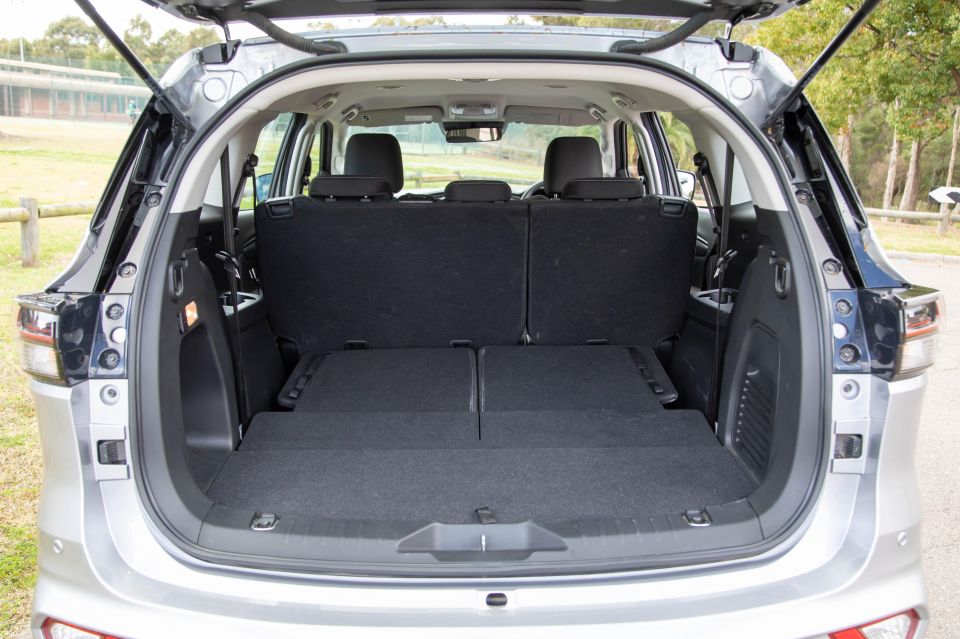
After reclining the backrest I found I could get reasonably comfortable in the third row of the MU-X. It’s definitely not somewhere I’d like to spend hours at a time, but thanks to the roof-mounted air vents it makes it a more pleasant place to be.
Pretty much every single finish in the third row is hard plastic and the only notable amenity is a cupholder on each side, plus a small nook large enough for a phone. There aren’t any USB ports.
Around the back the MU-X LS-M has a manual tailgate which is to be expected given it’s an entry-level model. You need to step up to the mid-spec LS-U to get a power tailgate, which even has a hands-free functionality.
Once the tailgate is open the boot space on offer is a little tight if you’ve got all three rows of seating upright, especially if you’ve got the third-row seats reclined.
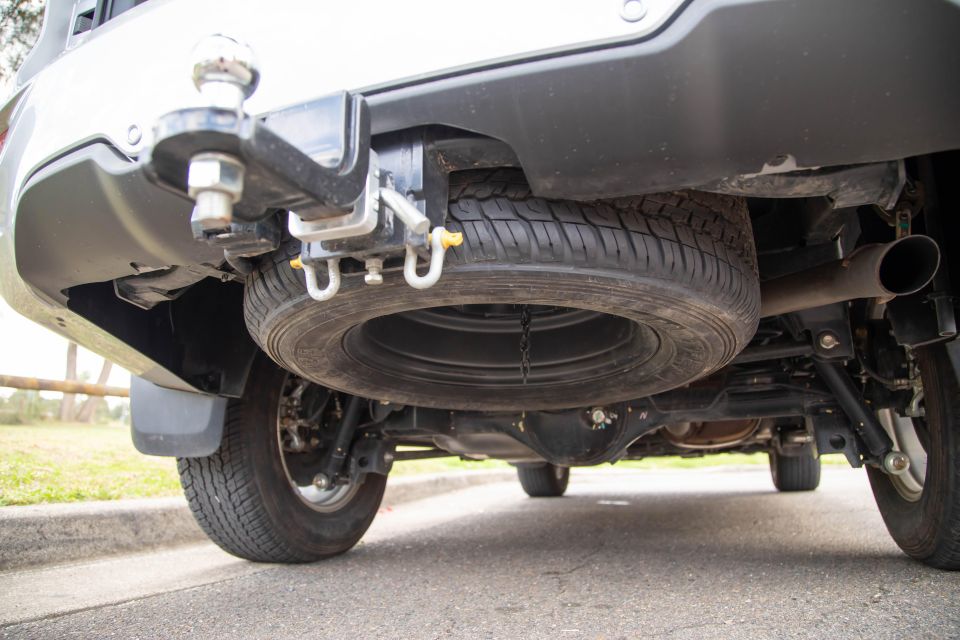
Isuzu officially claims the MU-X has 311L of boot capacity with the third row upright, expanding to 1119L with the third-row seats folded. If you fold the second and third rows boot space grows to 2138L.
Thankfully under the car there’s a full-sized spare wheel which is key given this kind of vehicle is frequently taken off-road and away from towns with tyre repair shops.
The highlight of the updated Isuzu MU-X is a new 1.9-litre four-cylinder turbo-diesel engine, which had previously been added to the D-Max in 2022.

Where expert car reviews meet expert car buying – CarExpert gives you trusted advice, personalised service and real savings on your next new car.
This new 1.9-litre turbo-diesel is 80kg lighter than the 3.0-litre turbo-diesel which continues to be offered in the MU-X lineup – it’s also claimed to be more fuel efficient and quiet.
| Model | Isuzu MU-X 1.9L 4×4 |
|---|---|
| Engine | 1.9L 4cyl turbo-diesel |
| Power | 110kW (3600rpm) |
| Engine torque | 350Nm (1800-2600rpm) |
| Transmission | 6-speed auto |
| Driven wheels | Part-time four-wheel drive (2H, 4H, 4L) |
| Weight | 2140kg (kerb) |
| Payload | 735kg |
| Gross vehicle mass (GVM) | 2800kg |
| Unbraked towing capacity | 750kg |
| Braked towing capacity | 3000kg |
| Maximum tow ball download | 300kg |
| Gross combined mass (GCM) | 5500kg |
| CO (claim) | 196g/km (combined) 237g/km (urban) 177g/km (extra urban) |
| Fuel economy (claim) | 7.4L/100km (combined) 9.0L/100km (urban) 6.7L/100km (extra urban) |
| Fuel economy (observed) | 8.2L/100km (highway driving with people, luggage) 13L/100km (off-roading) |
| Fuel tank size | 80L |
Given my experience with the 1.9-litre MU-X was limited to a brief drive at the national media launch it’s hard to call my observed fuel economy figures properly real-world. I look forward to spending a bit more time with the car on familiar territory to get a better figure.
To see how the MU-X compares with its rivals, use our comparison tool.
Our prescribed drive loop with the MU-X 1.9-litre was low-speed and heavily off-road-focused, though I did get a few brief opportunities to drive an example on the road.
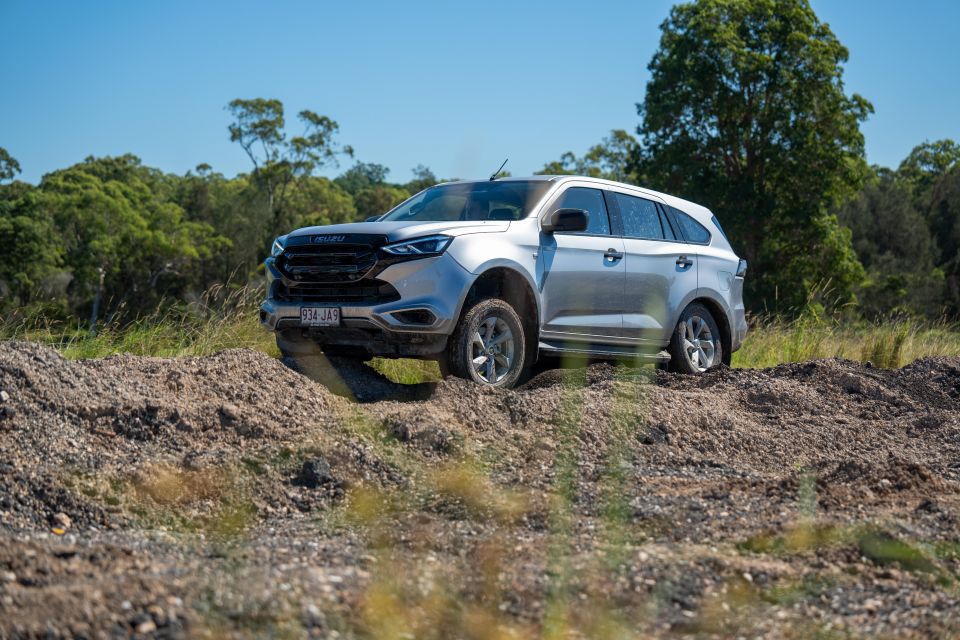
The most notable time was from the outskirts of Brisbane back to the airport on sweeping roads and freeways with four people onboard, plus our luggage.
Starting up the MU-X with the new engine it’s notably quieter and less raucous than variants equipped with the carryover 3.0-litre four-cylinder turbo-diesel. The idle noise still has an agricultural undertone.
Setting off the initial acceleration is adequate but not earth shattering. It’s better than I first thought, and feels better than its outputs suggest at lower speeds. Load the car up with people and equipment however and the acceleration does slow down and becomes more leisurely.
Isuzu was quick to point out the 1.9-litre develops the full 350Nm of torque from 1800 to 2600rpm. It also produces 300Nm from 1550 to 3700rpm, which is almost three quarters of the rev band.
It’s clear this powertrain makes the most sense in low-speed, arguably urban settings given the fact it’s more efficient and produces less CO than the 3.0-litre.
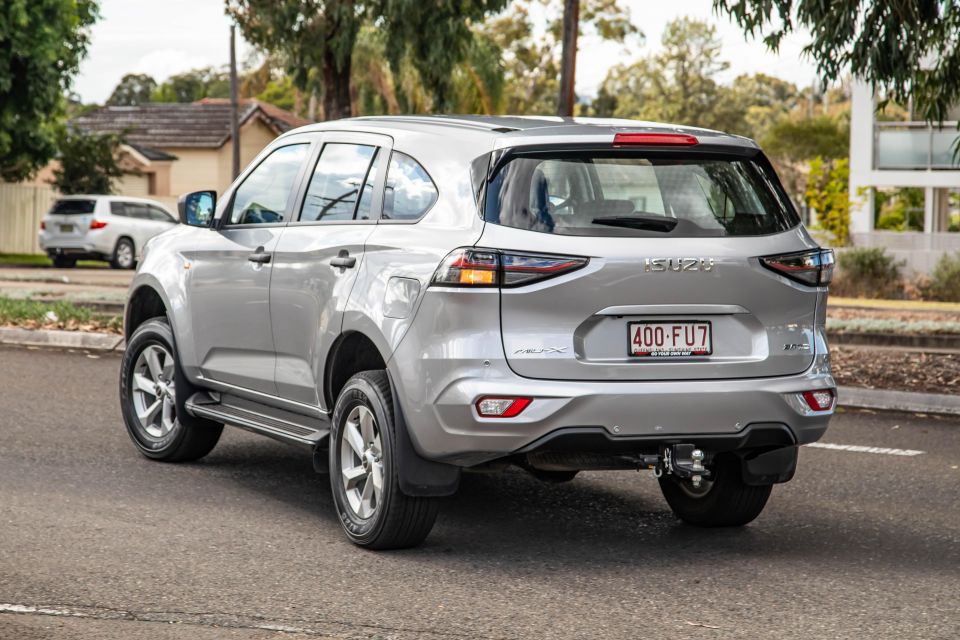
Unfortunately this engine is only Euro 5 classified in Australia, and isn’t the most efficient version available – there is a Euro 6d version of this engine available in markets including the United Kingdom.
The six-speed automatic transmission which comes as standard makes the most out of the 1.9-litre’s outputs. On paper 110kW and 350Nm really isn’t much when it’s moving a seven-seat SUV that weighs 2.1 tonnes unladen.
This automatic transmission shifts through the gears very smoothly under light loads but does have to hold them a bit longer than the 3.0 when accelerating. Once you reach a cruising speed around town it will keep the revs low, making everyday driving relatively quiet.
The MU-X’s steering is on the lighter side which makes navigating in low-speed scenarios easier. Like a number of body-on-frame vehicles however you still have to twirl the steering wheel a bit to get the SUV to change directions.
The lighter steering also makes the 1.9-litre MU-X feel a touch more nimble. The smaller engine is technically 80kg lighter than the 3.0-litre, which in turn also boosts the payload figure to an almost segment-leading 735kg depending on the variant.
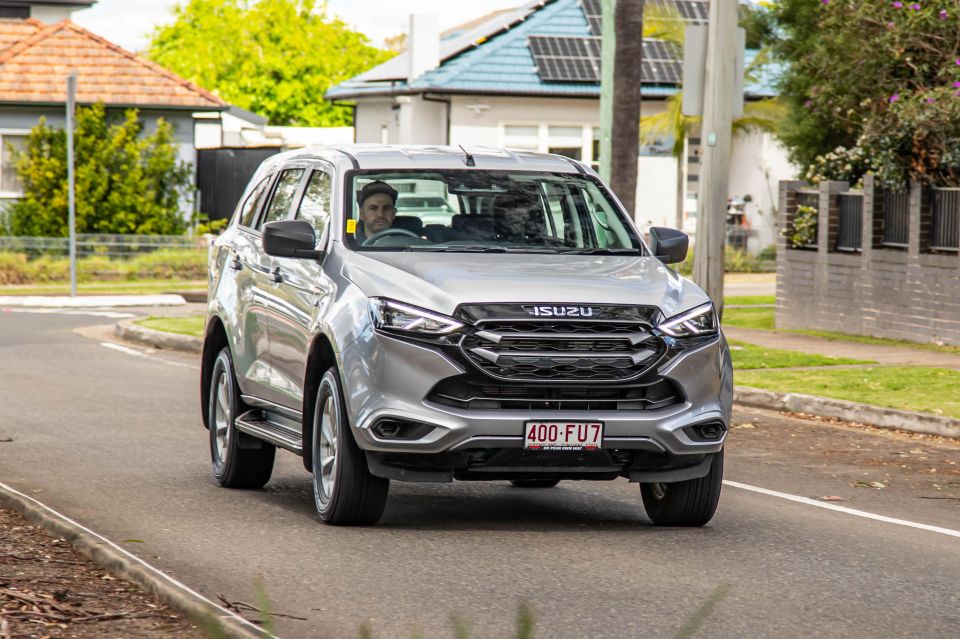
The suspension tune is supple and compliant, able to soak up road imperfections and speed bumps easily. Its body control is also nice for a large SUV which has a high centre of gravity, but it still gets the leans in the corners.
Isuzu claims it has revised the MU-X’s steering geometry settings in order to rectify the pesky bump steer issue that was causing premature and uneven tyre wear on customer’s cars. The company also says it will fix the steering alignment of any customer-delivered example experiencing the issue, along with replace the affected tyres.
While the 1.9-litre MU-X does feel lighter on its feet, there’s no disguising how large it is when you park it. The entry-level LS-M I primarily drove at the media launch drive only comes equipped with rear parking sensors and a reversing camera with adequate resolution.
Building up speed is where things start to come undone. In all fairness the car does still get along pretty solidly, but acceleration slows down even more and the engine really has to be worked.
When the 1.9-litre engine revs above 2500rpm it doesn’t make the nicest sound. If you’re planning to spend a fair bit of time on the highway you’d be better placed to look at larger and more powerful 3.0-litre which is only $2000 more.
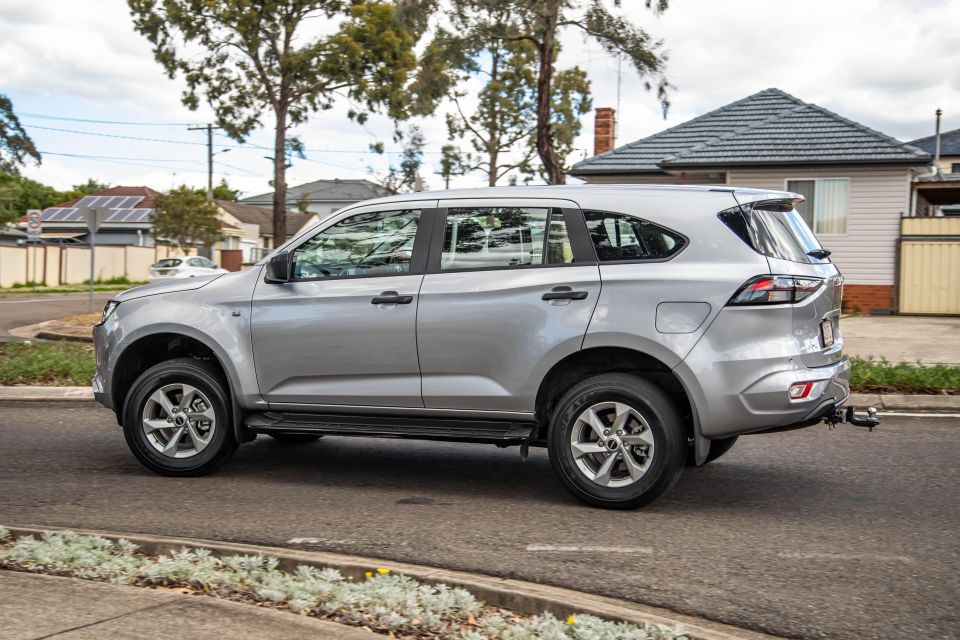
Once you reach 80km/h it’s almost like it hits a false ceiling which makes acceleration really difficult. No matter how much throttle you apply the acceleration rate stays the same.
You do eventually get to highway and freeway speeds but I imagine if you’re towing and have people onboard the car will struggle. If you plan to use the car for these kinds of purposes I’d strongly recommend going for the 3.0-litre.
On the highway the engine will happily cruise along at around 1800rpm. It’s actually pretty quiet inside, though the moment the car even gets a whiff of an incline the transmission dives back through the gears to maintain speed.
MU-X variants with the 3.0-litre engine are much better at maintaining higher speeds and don’t require as many downshifts, making the driving experience less frenetic.
On the safety front adaptive cruise control comes as standard across the entire MU-X range. While it is a handy feature to have when driving along monotonous highways, it does amplify how little power and torque the engine has at higher speeds.
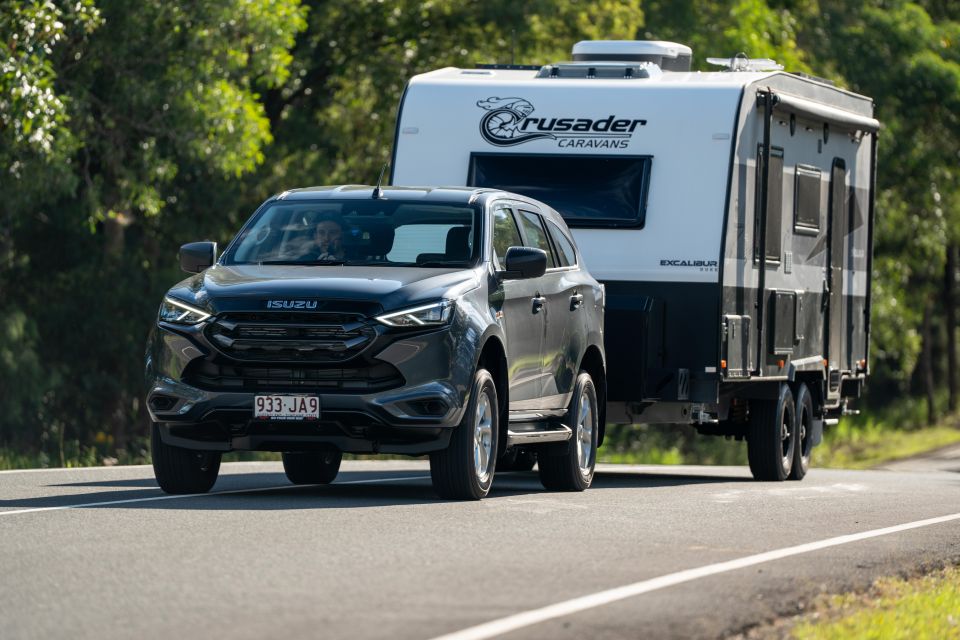
On uphill sections the transmission shuffled between fifth, sixth, and occasionally fourth gears trying to find enough oomph to maintain speed. This was a little awkward from the driver’s perspective and somewhat ruined the ambience.
The adaptive cruise control also struggles to keep to its set speed. It will drop considerably below the set speed when going up a hill, and then go well and truly beyond it going downhill. I was able to maintain speed much better myself.
The lane-centring system can be a little annoying as it bounces the SUV around the lane and gets confused easily when the lane markings fade. It’s best suited for clearly marked highways and freeways.
Thankfully you can switch all of the lane-keeping and lane-centring functions off very easily with buttons on the steering wheel.
You’ve waited long enough, it’s time to talk off-roading. Unsurprisingly the MU-X with the 1.9-litre engine is still really capable off-road.
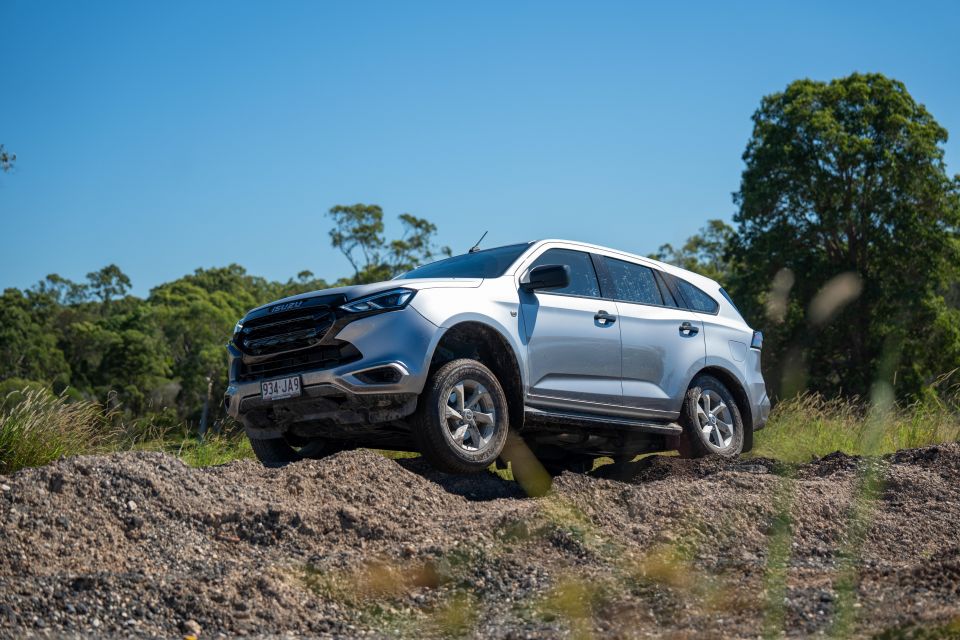
The four-wheel drive dial is easy to locate, though it’s worth calling out it’s only a part-time four-wheel drive system, meaning 4H and 4L can only be used on unsealed surfaces. Thankfully you can switch between 2H and 4H on the fly at speeds up to 100km/h.
I found with the obstacles that we had to face during our off-road-focused launch drive the 1.9-litre MU-X was able to them just as easily as a 3.0-litre-equipped example. It’s almost unstoppable in 4L with the rear differential locked.
The MU-X still comes with a Rough Terrain mode which uses ABS to brake the wheels which are freely spinning and direct more torque to the wheels that are actually touching the ground. This mode requires the wheels to slip a bit before activating which can at points be a little jarring.
It would be nice to have the Rough Terrain mode work with the rear differential lock to maximise its off-road capability. Hopefully an update will be coming soon.
The 2024 Isuzu MU-X is available in three different trim levels, though the new 1.9-litre four-cylinder turbo-diesel engine option can only be had in the entry-level LS-M and mid-spec LS-U variants.
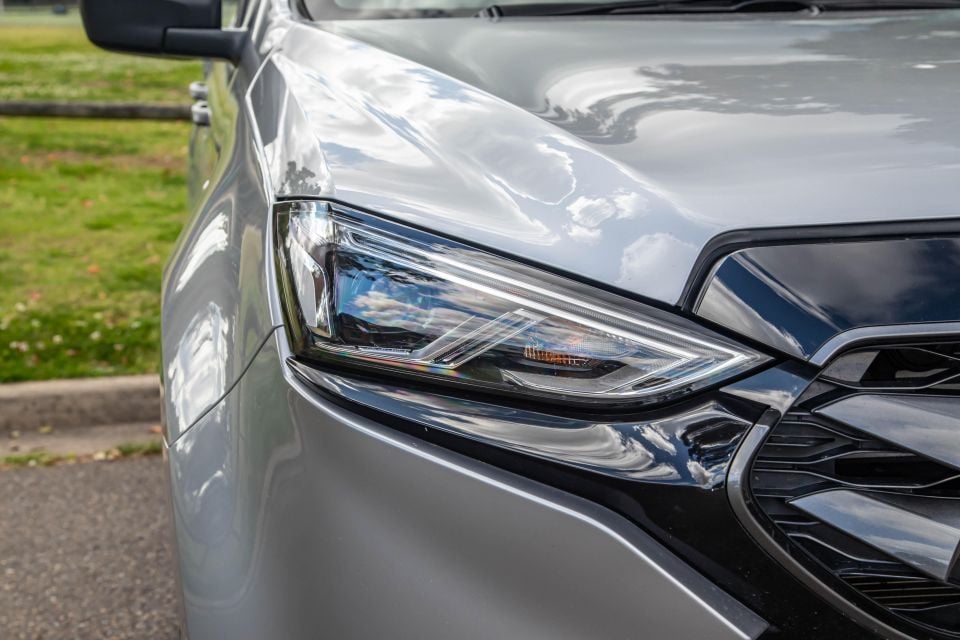

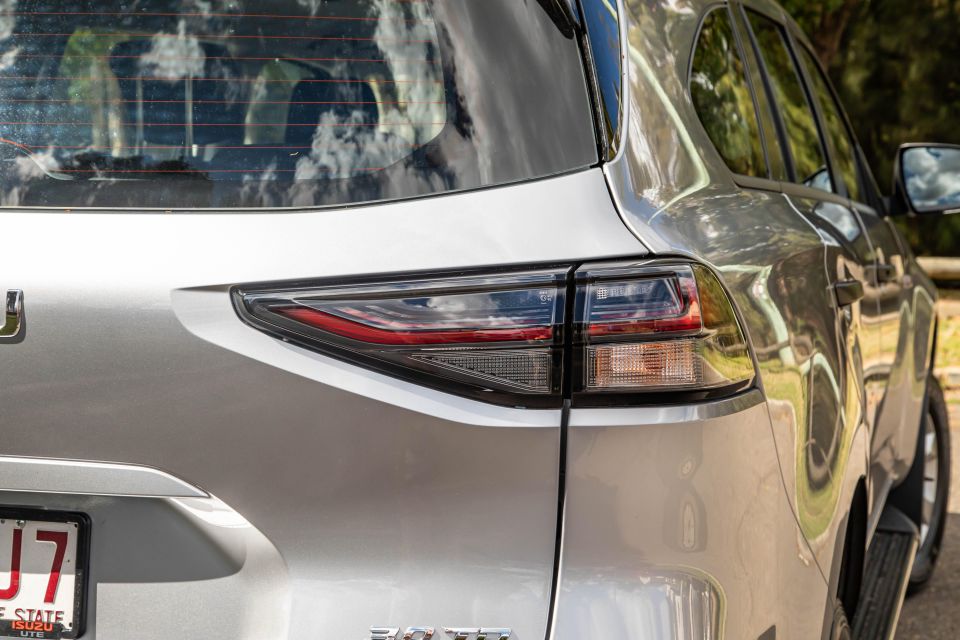
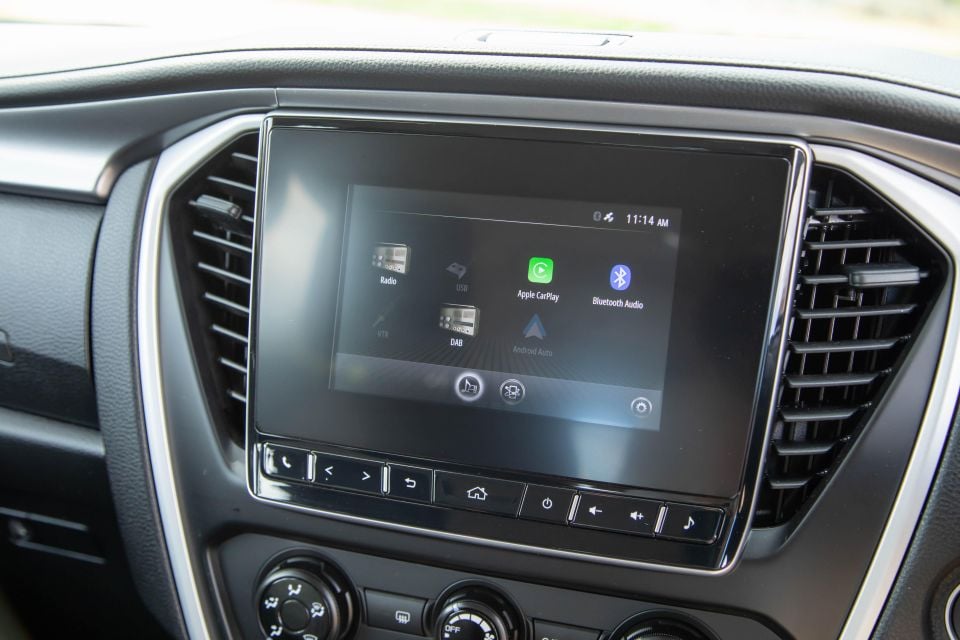
Isuzu MU-X LS-M highlights:
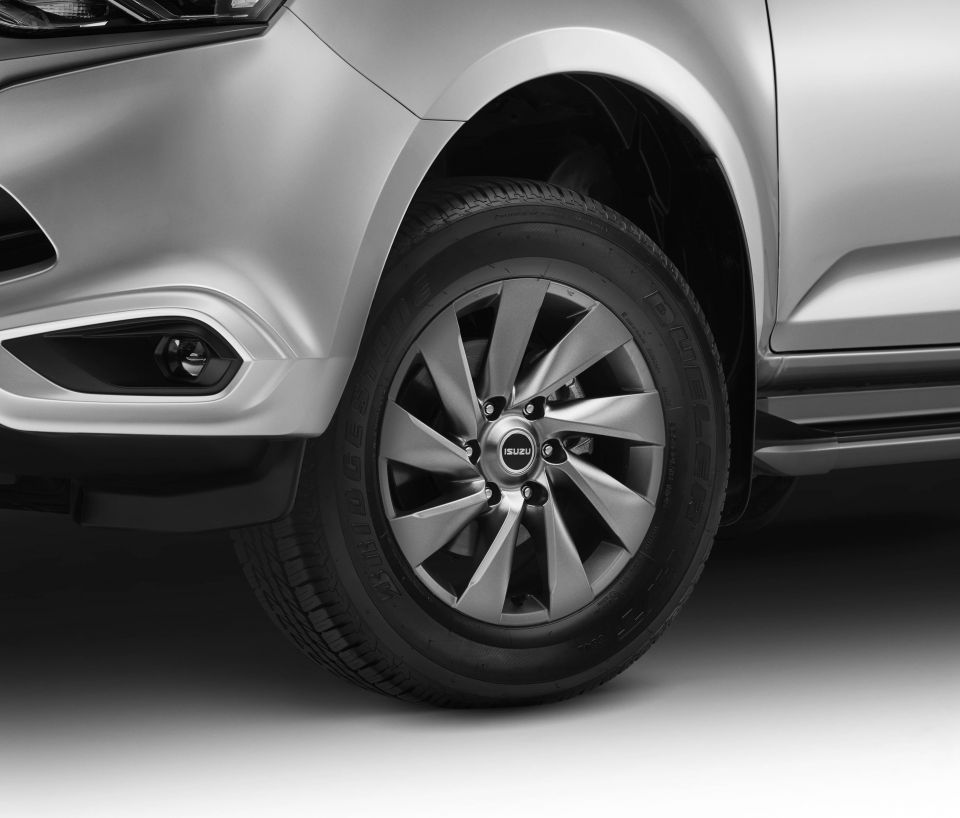
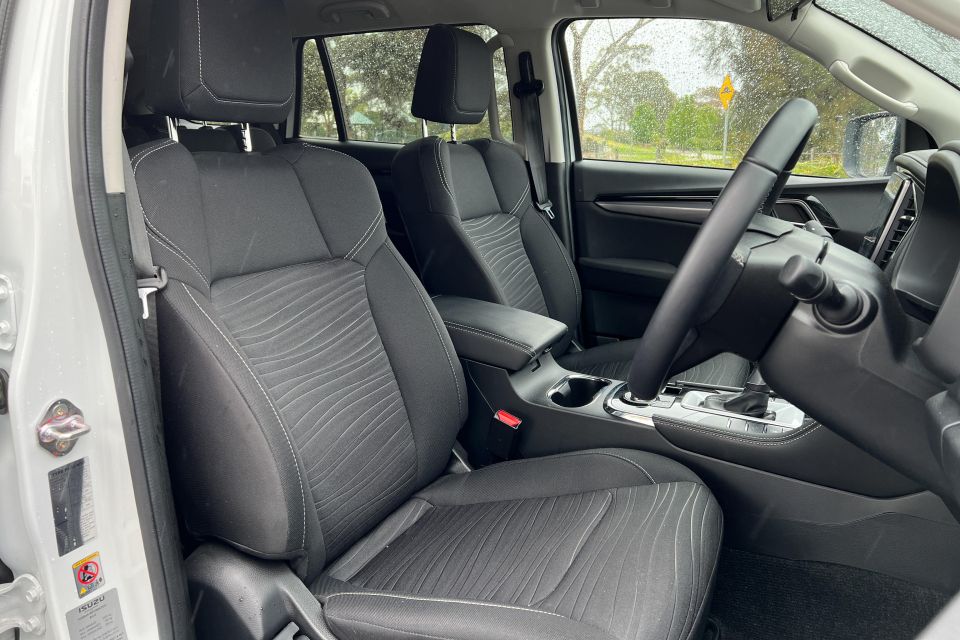
LS-U adds:
The Isuzu MU-X has a five-star safety rating from ANCAP, issued in July 2022 after a redesign to the driver’s knee airbag and instrument panel.

It received an adult occupant protection score of 86 per cent, child occupant protection score of 85 per cent, vulnerable road user protection score of 69 per cent, and safety assist score of 84 per cent.
The 2024 Isuzu MU-X range comes standard with the following safety features:
Isuzu MU-X LS-U variants and above also receive front parking sensors and tyre pressure monitoring.
The 2024 Isuzu MU-X is covered by a six-year, 150,000km warranty. When you service on schedule at an Isuzu dealer, up to seven years of roadside assistance is offered.
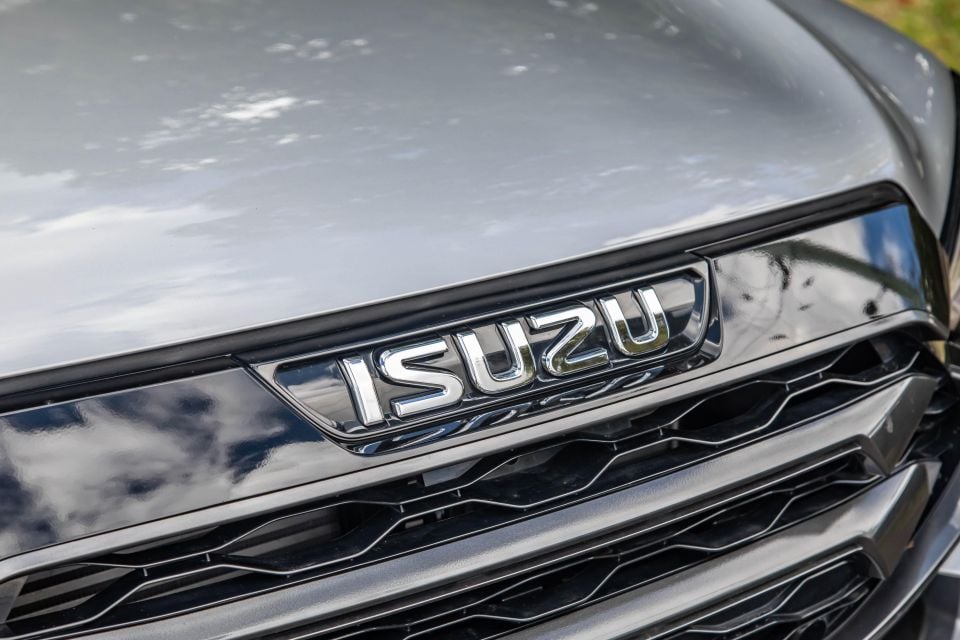
Logbook servicing is required every 12 months or 15,000km, whichever comes first, apart from a complimentary three-month service.
Isuzu MU-X service pricing:
| Service | Price |
|---|---|
| 3 months/3000km | Free |
| 12 months/15,000km | $449 |
| 24 months/30,000km | $449 |
| 36 months/45,000km | $449 |
| 48 months/60,000km | $449 |
| 60 months/75,000km | $449 |
Buy your new car without the stress. It's fast, simple and completely free.

Great service from Travis and team, second time I have used this business would not hesitate to recommend them to anyone
Craig C.
Purchased a Ford Ranger in Sunshine Coast, QLD
CarExpert helped Craig save $7,224 on his Ford Ranger, now let us save you on your next new car.
Get your BEST priceThis new 1.9-litre engine option in the Isuzu MU-X comes at a pivotal time as the Australian Federal Government is looking to introduce the New Vehicle Efficiency Standard (NVES), meaning car brands are looking to introduce more efficient powertrains.

The 1.9-litre does tick that box as a more fuel efficient option that produces less CO than the 3.0-litre. For many buyers, including fleet buyers, this may be enough to get a sale over the line, especially because it’s still got a valid five-star ANCAP safety rating.
It’s a nice positive that variants equipped with the 1.9-litre turbo-diesel engine lighter than ones with the 3.0-litre engine, meaning a higher payload figure, and are more affordable.
Things aren’t perfect however, as 1.9-litre variants are only $2000 cheaper than 3.0-litre variants. That’s not much more affordable given the rest of the range got a price rise between $500 and $2000, depending on the variant, for 2024 with no specification changes.
1.9-litre MU-X variants also have to work much harder to get up to speed and maintain it. They have a reduced braked towing capacity compared to 3.0-litre turbo-diesel (3.0 tonnes v 3.5 tonnes). If it’s outright performance, especially towing performance, you’re after you’d be best placed to consider the 3.0-litre instead.
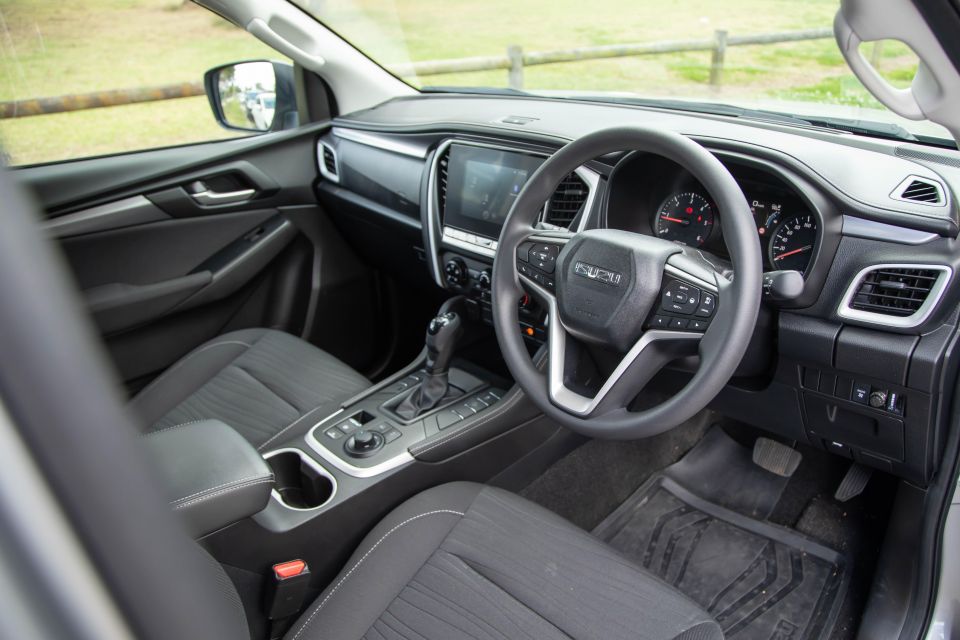
That’s not to call the 1.9-litre engine something to overlook in the MU-X.
Variants with this engine may firm as the pick of the range if you’re budget-oriented and are looking to spend a little less on fuel. They’re also still really capable off-road for variants equipped with four-wheel drive.
I do wish Isuzu Ute Australia would bring the Euro 6d version of this 1.9-litre turbo-diesel engine Down Under if the company is actually looking to reduce fleet emissions given NVES is looming.
Before signing on the dotted line for an MU-X with a 1.9-litre engine I’d recommend shopping around and test driving other options to determine whether you actually need a body-on-frame SUV. You might be better suited to a more road-focused unibody SUV instead.
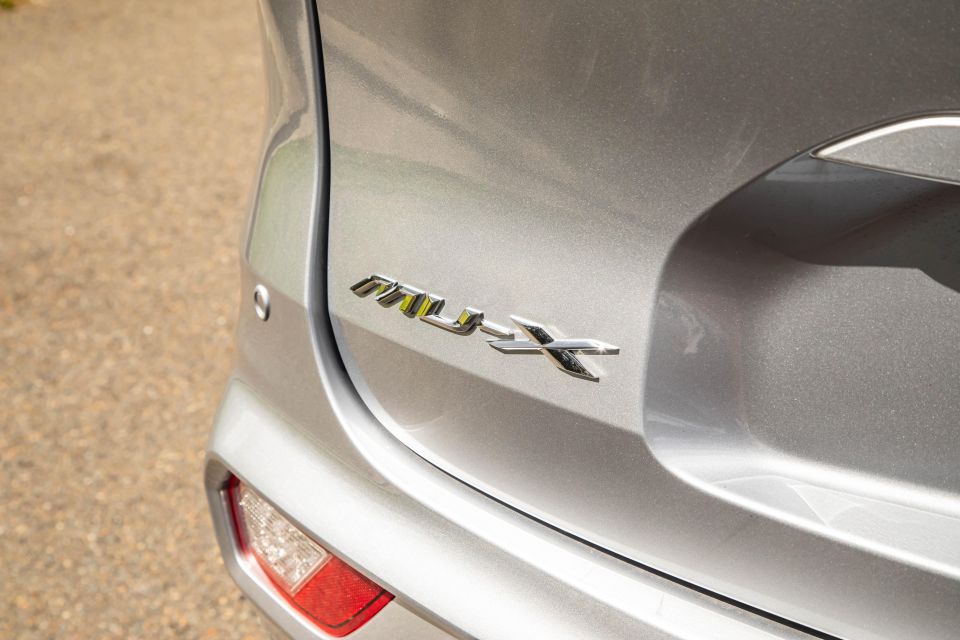
Click the images for the full gallery
MORE: Buy a Isuzu MU-X MORE: Everything Isuzu MU-X
Where expert car reviews meet expert car buying – CarExpert gives you trusted advice, personalised service and real savings on your next new car.
Jack Quick is an automotive journalist based in Melbourne. Jack studied journalism and photography at Deakin University in Burwood, and previously represented the university in dance nationally. In his spare time, he loves to pump Charli XCX and play a bit of Grand Theft Auto. He’s also the proud owner of a blue, manual 2020 Suzuki Jimny.


Max Davies
3 Months Ago


Matt Campbell
2 Months Ago
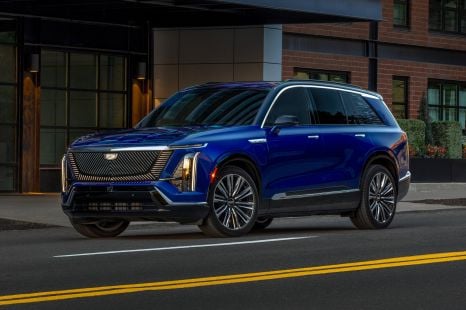

William Stopford
2 Months Ago
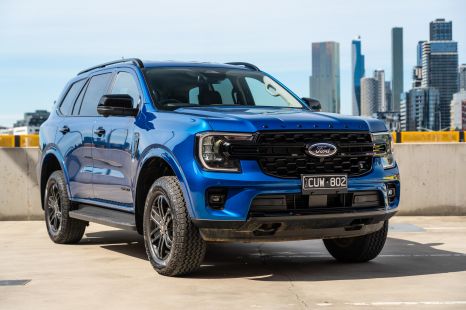

Josh Nevett
2 Months Ago


Max Davies
1 Month Ago
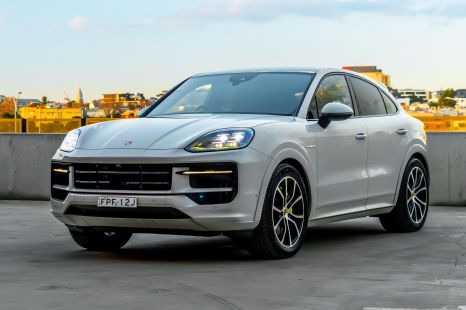

James Wong
27 Days Ago